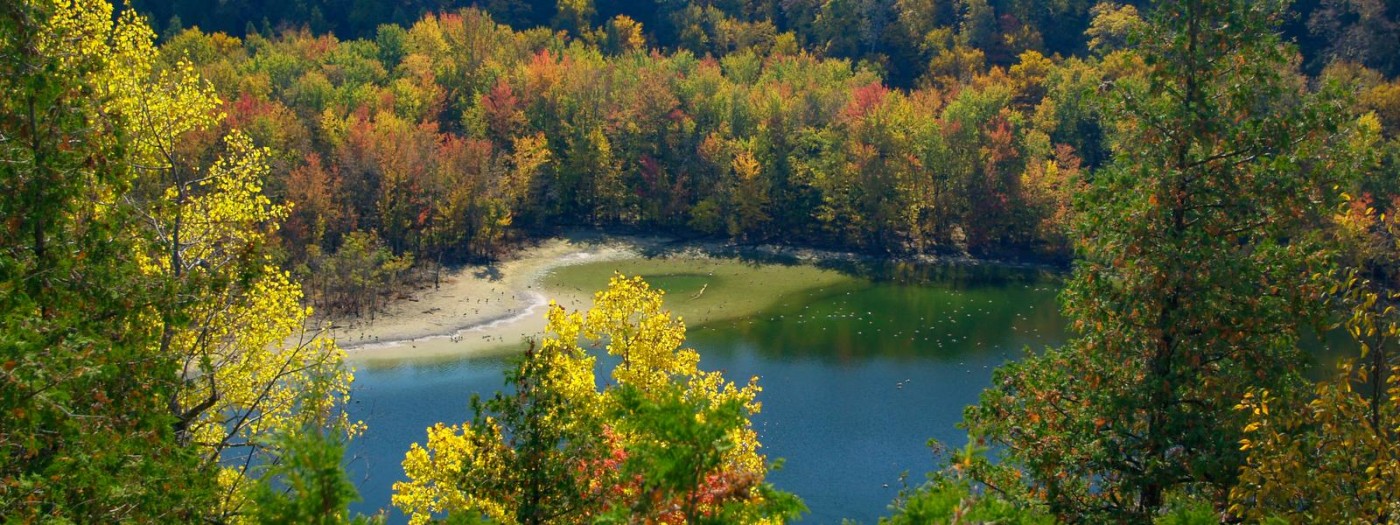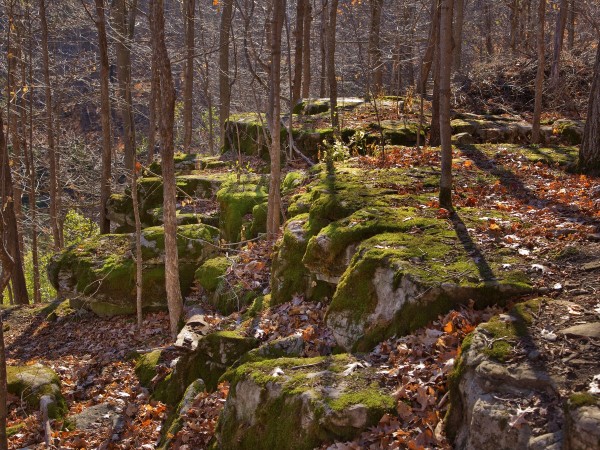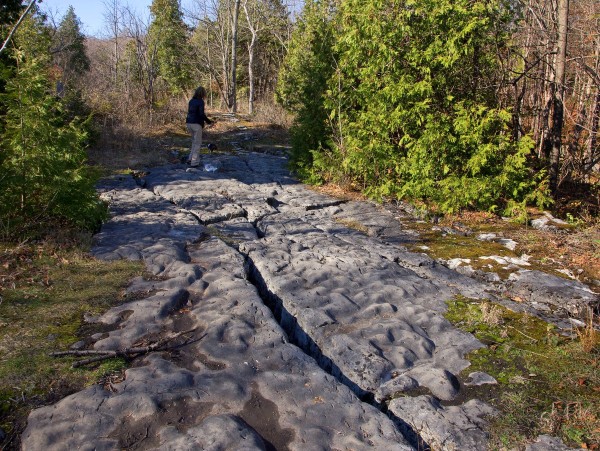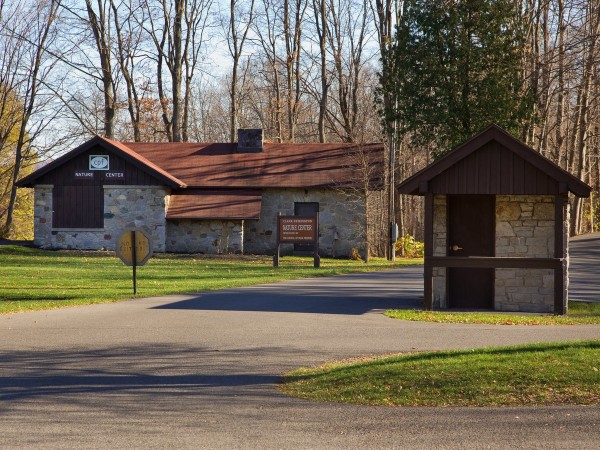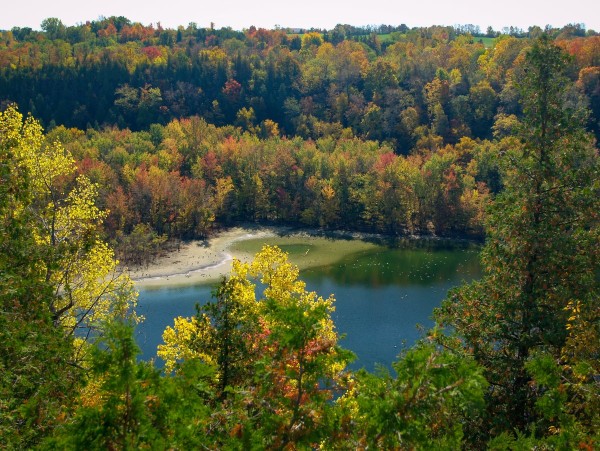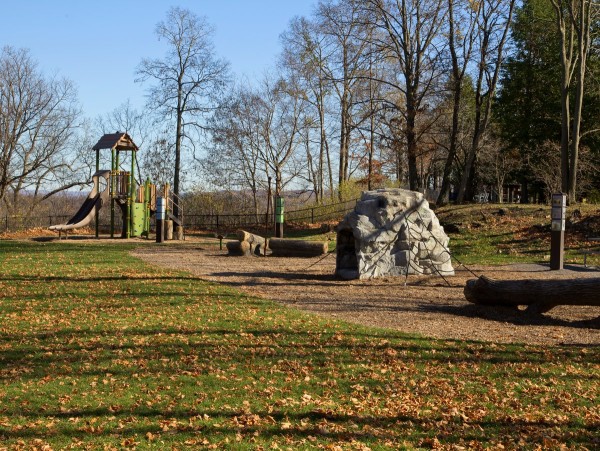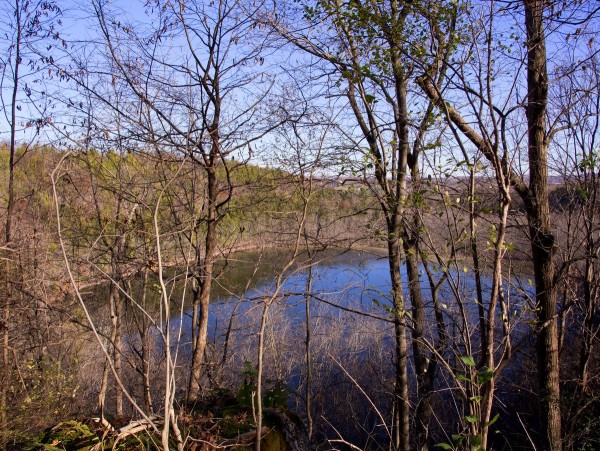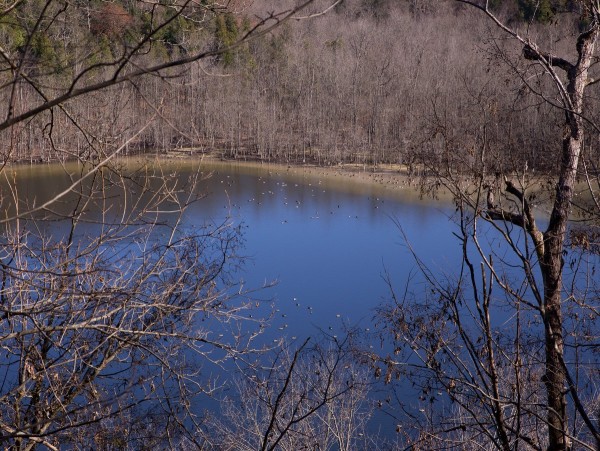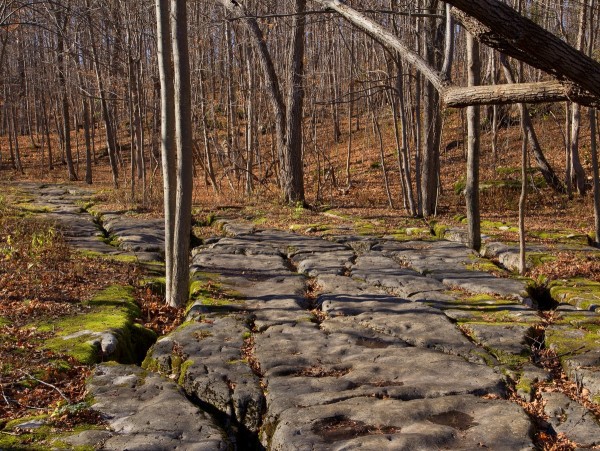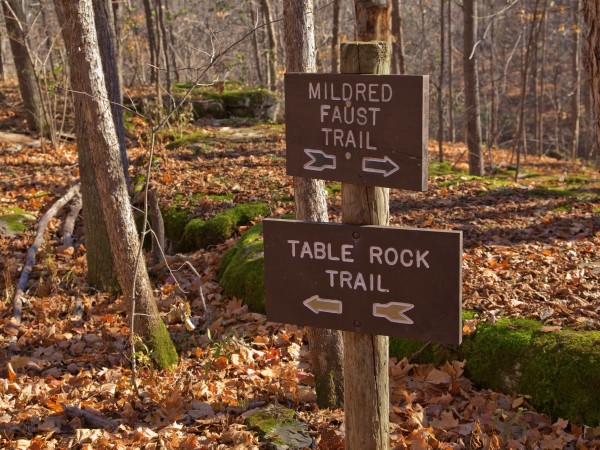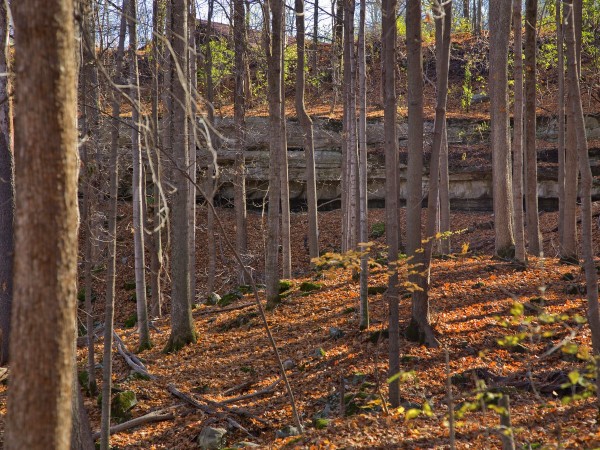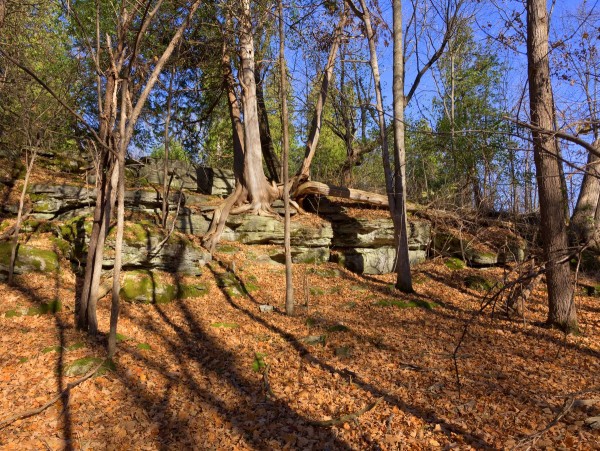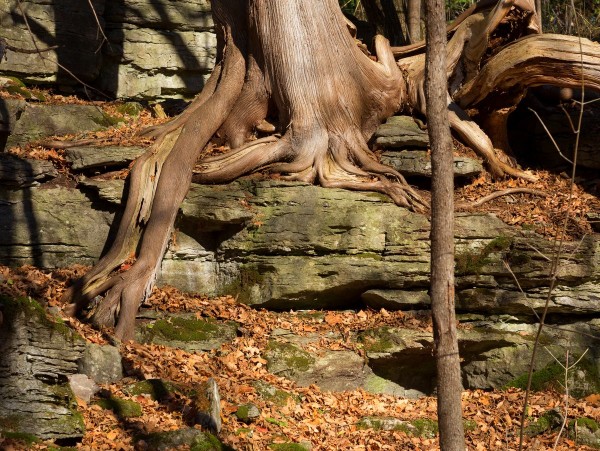Roughly 340 acres in size, Clark Reservation State Park packs in a great deal of botanical and geological diversity in a small footprint. At the heart of the park is Glacier Lake, which is similar to the astoundingly unusual Green and Round Lakes at Green Lakes State Park. Like these lakes, Glacier Lake was scooped out by a mile-high waterfall cascading down the face of a giant ice sheet and is one of only a few meromictic lakes in the United States. But unlike the level and groomed trails around the lakes at Green Lakes State Park, the trail that encircles Glacier Lake is rugged and wild in character. Cobbles and boulders fill portions of the Lake Trail and sections are often on the verge of flooding.
Portions of the Cliff Trail, which follows the 175-foot-high cliff edge, reveal the unique plunge pool shape of the lake, but the surrounding canopy is thick in summer so glimpses of the lake are limited. In autumn the orange, yellow, and red fall foliage provides a stark contrast, and the lake is easily seen; it provides a stunning photo op. Other trails wind through deep forest and beside the lake’s outlet/swamp so there are multiple routes through a variety of niches.
Aside from the stunning geological significance of the park, an equally impressive and diverse species of plant life make this park literally a wild botanical garden. Hundreds of flowering plants, 80 species of trees, 100 types of moss, and, most notably, 26 species of ferns are all observable along the nearly six miles of interconnected loop trails.
Ferns, specifically American hart’s tongue, are closely tied to the park’s preservation. Pteridomania, or “fern fever” was a fad in Victorian culture and the identification and collection of wild or odd species of ferns became a widespread hobby. It was this craze that lead to the discovery and cataloging of the local hart’s fern in the area. American hart’s tongue is a rare fern, now classified as endangered, that grows between rock clefts in shaded, moist, and verdant forests. Naturalists flocked to the area, but when limestone quarrying threatened the destruction of Glacier Lake, naturalists sounded the alarm about the importance of saving these rare, geologically unique lakes and their correspondingly unique fern populations.
Mary Clark Thompson purchased a 109-acre parcel that surrounds present-day Glacier Lake. She gifted the land to the state with the one caveat that it be named after her father and former New York governor, Myron H. Clark. The incredible act of generosity preserved Glacier Lake, but similar efforts to save Blue Lake failed. Just before its destruction, roughly a thousand hart’s tongue ferns were transplanted to Clark Reservation. Presently, the park is home to the largest community of American hart’s tongue. In fact, New York is home to nearly 90 percent of American hart’s fern existing within the United States.
A good guidebook is recommended for identifying the wide variety of plants, but the park’s nature center often has educational hikes hosted by naturalists. The nature center, operated by the Council of Park Friends, is open from Memorial Day to Labor Day and will no doubt open your eyes to the diverse and botanical nature of this gem of a park.

